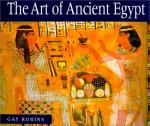|
This section contains 1,837 words (approx. 7 pages at 300 words per page) |

|
Lack of Money. The best information about prices of commodities is preserved from the village of Deir el Medina. The Egyptians did not have money; instead, prices were expressed by metal weights. The weights themselves were not exchanged. In a barter arrangement, the two parties calculated the values in units of the weights of the objects that they wished to exchange. Then each party grouped several objects together until each group was worth an equal amount of weights.
Problems in Interpretation. Prices are recorded on a few papyri and many ostraca—broken pieces of pottery and limestone basically used as "scratch paper" by the Egyptians. These prices all date to Dynasties 19 (circa 1292- 1190 B.C.E.) and 20 (circa 1190-1075 B.C.E.), a period of about 150 years. Problems in interpreting this data include poor handwriting, faded ink, broken...
|
This section contains 1,837 words (approx. 7 pages at 300 words per page) |

|




